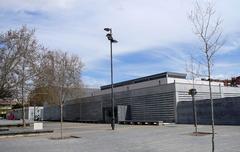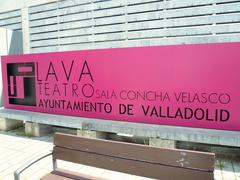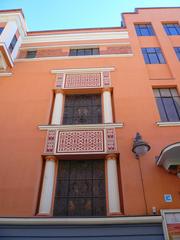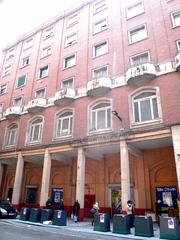
Church of San Benito el Real Valladolid: Hours, Tickets, and Historical Significance
Date: 04/07/2025
Introduction
The Church of San Benito el Real in Valladolid stands as a monumental testament to Spain’s rich religious, architectural, and cultural heritage. Founded in the late 14th century under the patronage of King Juan I of Castile, this historic Benedictine monastery has evolved over centuries, reflecting the transition from late Gothic to Renaissance and Herrerian styles. With its impressive stone construction, characteristic star-shaped ribbed vaults, and the monumental façade by Rodrigo Gil de Hontañón, San Benito el Real offers visitors a glimpse into Valladolid’s spiritual and artistic legacy. Today, it remains an active center of worship, a hub for community devotion, and a must-see destination for travelers and art enthusiasts alike. This guide provides comprehensive information on visiting hours, tickets, accessibility, and historical context to enrich your experience (Turismo Castilla y León; myCityHunt; visitarvalladolid.com).
Table of Contents
- Historical Overview
- Cultural and Artistic Significance
- Visiting Information
- Architectural Features and Highlights
- Events and Community Life
- FAQs
- Practical Visitor Tips
- Further Reading
Historical Overview
Foundation and Monastic Heritage
The Church of San Benito el Real traces its origins to the late 14th century, when King Juan I of Castile donated the site—formerly the royal Alcázar—to the Benedictine order. The monastery quickly became a significant religious and cultural center in Valladolid, reflecting the close ties between the monarchy and the Church (Turismo Castilla y León; visitarvalladolid.com).
Construction of the current Gothic church began in 1499 under Juan de Arandia and García de Olave and was completed in 1515. The monastic complex, which included three cloisters (notably the Patio Herreriano), became a hub for theological study, manuscript production, and Benedictine spirituality.
Architectural Evolution
San Benito el Real is a benchmark for late Gothic ecclesiastical architecture in Spain, later incorporating Renaissance and Herrerian influences. The monumental façade—designed by Rodrigo Gil de Hontañón in 1569—originally featured soaring towers, partially demolished in the 19th century due to structural concerns (Top Valladolid; La Coruja Cultural). The church’s hall-church interior (Hallenkerk), with three naves and star-shaped ribbed vaults, is a hallmark of Castilian Gothic design.
The adjacent monastic complex reflects Herrerian austerity and Mannerist influences, notably in the so-called Patio Herreriano, now home to the Museo Patio Herreriano de Arte Contemporáneo Español.
Cultural and Artistic Significance
San Benito el Real has long served as a focal point for Valladolid’s religious and cultural life. Its Benedictine community shaped the city’s intellectual and artistic development throughout the late Middle Ages and Renaissance.
Artistic Heritage
The church originally housed an extraordinary collection of artworks, including the high altarpiece by Alonso Berruguete, a masterpiece of Spanish Renaissance sculpture (benedictinstitute.org). Much of this heritage was dispersed following the 19th-century secularization, but key pieces such as the choir stalls and sections of the altarpiece are preserved in the Museo Nacional de Escultura (myCityHunt).
Other notable features include the Plateresque choir stalls by Andrés de Nájera (1528), the 16th-century wrought iron screen by Tomás Celma, and various altarpieces and sculptures by artists like Gregorio Fernández.
Liturgical and Social Role
San Benito el Real remains a vital center of worship, especially during Semana Santa (Holy Week), hosting processions and liturgies that draw crowds from across the region (visitarvalladolid.com). The church’s architecture amplifies the solemnity of these events, and its brotherhoods play a central role in Valladolid’s religious identity.
Visiting Information
Hours and Admission
- Regular Opening Hours:
Tuesday to Saturday: 10:00 AM – 7:00 PM
Sunday: 10:00 AM – 3:00 PM
Closed on Mondays and major public holidays (valdedios.org; official mass schedule) - Admission:
Entry is generally free for individual visitors; donations are welcome. Guided tours and some exhibitions may require a ticket (typically €3–€6).
Accessibility
The church is largely accessible, with ramps at the main entrance and designated areas inside for wheelchair users. Some historic areas may have uneven floors or steps, so visitors with specific needs should contact the church in advance for assistance (valdedios.org).
Guided Tours and Audio Guides
Guided tours in Spanish and English are offered regularly and can be booked through local tour operators or the church’s visitor center. Audio guides are available onsite and through the Audiala app (myCityHunt).
Location and How to Get There
- Address: Calle de San Benito, 3, 47003 Valladolid, Spain
- Transport: Easily reachable on foot from the city center. Local Auvasa buses, taxis, and bike rentals are available. The church is less than 1 km from Valladolid Campo Grande train station and well-served by intercity buses and taxis (wikivoyage).
Nearby Attractions
- Museo Nacional de Escultura
- Plaza Mayor
- Valladolid Cathedral
- Mercado del Val
- Museo Patio Herreriano (contemporary art museum in the former cloister)
Architectural Features and Highlights
- Façade: The Renaissance-influenced gate-tower by Rodrigo Gil de Hontañón, with octagonal columns and monumental presence (Top Valladolid).
- Interior: Hall-church layout with three naves of nearly equal height, ribbed vaulting, and a star-shaped pattern (Turismo Castilla y León).
- Choir Stalls: Plateresque stalls by Andrés de Nájera (1528), originally for Benedictine abbots.
- Ironwork: The 16th-century wrought iron grille by Tomás Celma, separating the nave from the choir.
- Altarpieces: The current Baroque main altarpiece (1922, originally from Valladolid Cathedral) and various side chapels with notable artworks.
- Patio Herreriano: The cloister, now the Museo Patio Herreriano, blending medieval heritage with contemporary culture (spain.info).
Events and Community Life
San Benito el Real hosts regular masses, Holy Week processions, concerts, and community events. The Cofradía del Santo Sepulcro y Santísimo Cristo del Consuelo is based here, and the church plays a central role in Valladolid’s Semana Santa celebrations (visitarvalladolid.com). Annual events such as the feast of Saint Joseph and local festivals reinforce its status as a living spiritual center.
FAQs
Q: What are the current visiting hours?
A: Tuesday–Saturday 10:00 AM–7:00 PM; Sunday 10:00 AM–3:00 PM; closed Mondays. Hours may change during religious services or holidays—check the official site.
Q: Is there an entry fee?
A: Individual entry is generally free; donations are appreciated. Some tours or exhibitions may require a ticket.
Q: Is the church accessible to visitors with reduced mobility?
A: The main entrance is accessible, and most of the interior can be reached by wheelchair. Some historic areas have steps or uneven floors.
Q: Are guided tours available?
A: Yes, tours in Spanish and English are offered. Audio guides are available onsite and via the Audiala app.
Q: Can I attend religious services as a visitor?
A: Yes, the church holds regular masses and special events open to the public.
Q: Is photography allowed?
A: Non-flash photography is generally permitted, but visitors should be respectful, especially during services.
Practical Visitor Tips
- Dress Code: Modest clothing is recommended (shoulders and knees covered).
- Best Times: Early mornings or late afternoons are quieter. Weekdays are less crowded.
- Nearby Amenities: Cafés, restaurants, and public restrooms are available within walking distance.
- Combine Visits: Pair your visit with the adjacent Patio Herreriano Museum or other city landmarks for a full cultural experience (fascinatingspain.com).
Further Reading and References
- Turismo Castilla y León
- myCityHunt
- visitarvalladolid.com
- valdedios.org
- La Coruja Cultural
- Top Valladolid
- benedictinstitute.org
- spain.info
- misas.org
- fascinatingspain.com
- es.wikipedia.org
- wikivoyage
- Audiala





